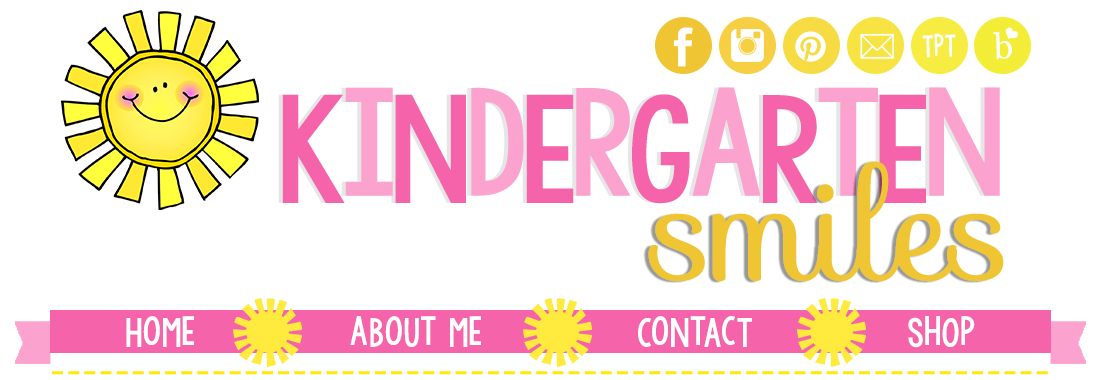Welcome to week 4 of the Freebielicious Summer book study! When discussing Chapter 3 last week in The Next Step in Guided Reading, I posted a couple pictures of my Guided Reading Starter Kit. Well...it is ready! This pack discusses how to start teaching rotations/centers to get your students ready for guided reading. It has initial assessments, rhyming cards, syllable cards, etc. You can see a preview below or click HERE to take a closer look on TPT.
This week I am lucky enough to host the study with 2 of my wonderful friends, Maria from Kinder-Craze and Krissy from Mrs. Miner's Monkey Business.
This chapter discusses students that are in the early reading stage. These students know their letters and sounds, but may still be learning how to apply their knowledge in reading. They also know how to read about 20 sight words.
Preparation
Just like I discussed in the previous post on Pre-A and Emergent Readers, you will assess your Early Reading students to see their exact level. You will want to pay close attention to their comprehension and self-monitoring skills. You will also want to keep a sight word list available.
This way you can track the sight words you teach and easily write them down. Jan Richardson suggests to not only keep track of the sight words that students know how to read, but also whether or not they know how to write the sight word. You will maintain this record and use it to help select guided reading books, plan your word studies, and create your dictated sentences for guided writing.
I keep all of my materials for my 4 different groups in these bins
They stay right on the counter behind me and definitely help me keep my materials easily accessible and organized!
Description of Lesson (a 2 day plan)
Introduction (3-4 minutes): Introduce the book you are going to read. Tell them the characters names and the problem in the story. Have students conduct a picture walk. While they are looking through the book, point out any new sight words or any new vocabulary that they may come across.
First Reading (8-10 minutes on the first day and 5-8 on the second day): Allow students to quietly read to themselves. As they are reading, you can work with individual students on a target strategy (self-monitoring, decoding, fluency, comprehension). This will be the best time to differentiate your instruction! If other students finish early, they can reread the book.
Teaching Points (1-2 minutes): Decide what your students really need to work on. If they need to work on monitoring, then you can read a sentence incorrectly and have students pick out the error. If students need to work on rereading, then you can choose a difficult page and have them read it again. You can also teach a specific decoding strategy at this time or have students reread an easier page to practice fluency. I know a major teaching point in my class always seems to be comprehension!
Discussion Prompt (1-2 minutes): Prepare an open ended question about the book for students to answer. I think this is a biggie with Common Core too :)
Teach One Sight Word (1 minute): If students already know between 50-60 sight words you can eliminate this activity. Otherwise, try to choose one new sight word to teach per book. Jan Richardson mentions some of my students' favorite activities to help teach sight words! What's Missing, Mix & Fix, table writing, and whiteboards are all fun and help kids learn new words.
Word Study (day 1 only-5 minutes): Pick one word study activity that matches your students decoding/phonics needs. One of the activities that I do a lot (because my students usually need it), is a digraph picture sort. I love that Jan Richardson said to only concentrate on sh, th, and ch and leave out wh. I find that wh confuses children! I also do A LOT of making words. I don't use magnetic letters, mainly because I don't have that many, but instead I use small letter cards that came with my Treasures reading series. When I get the letters our for the making words activity, my children are usually like 'YES!!' They love this!
Guided Writing (day 2 only-5 minutes): Make simple journals for your students by folding a piece of construction paper in half and adding lined paper. I add paper without handwriting lines at the beginning of the year and then change over to handwriting lines when they are ready. Some options that I like for the guided writing portion are dictated sentences and writing about the beginning/middle/end of the story you read. During this time you can make sure children are spelling their sight words correctly, using the correct letter formation, and sounding out unknown words correctly.
It's A Blog Hop!!
Make sure to check out my other wonderful hostesses thoughts on this chapter by clicking on their blog below! We would also love for you to link up too!!








































